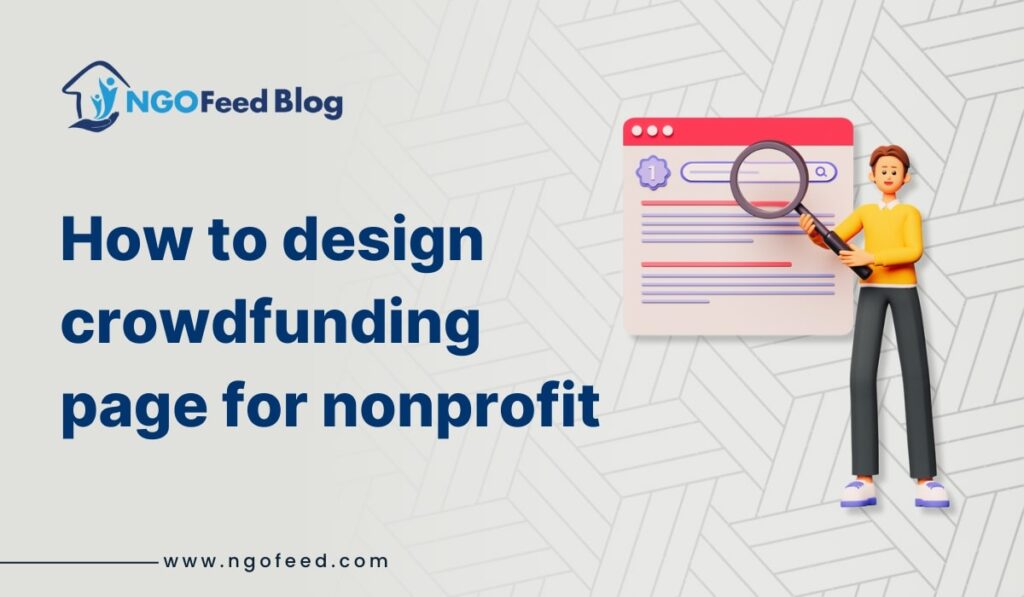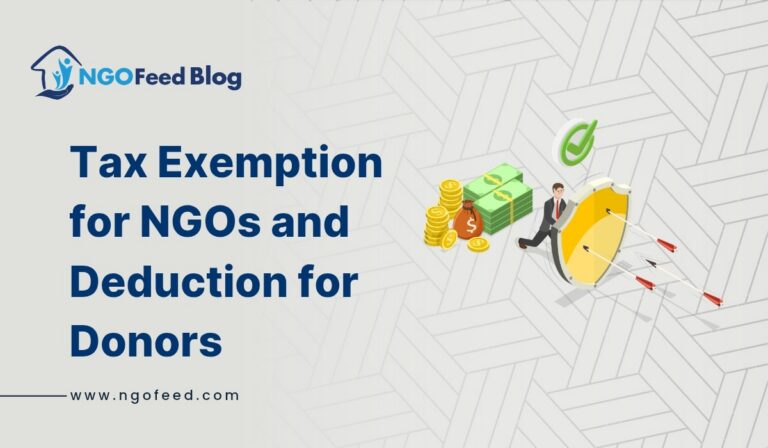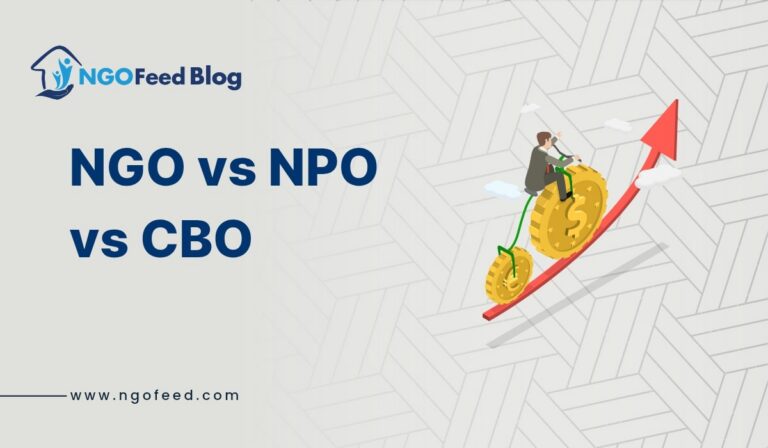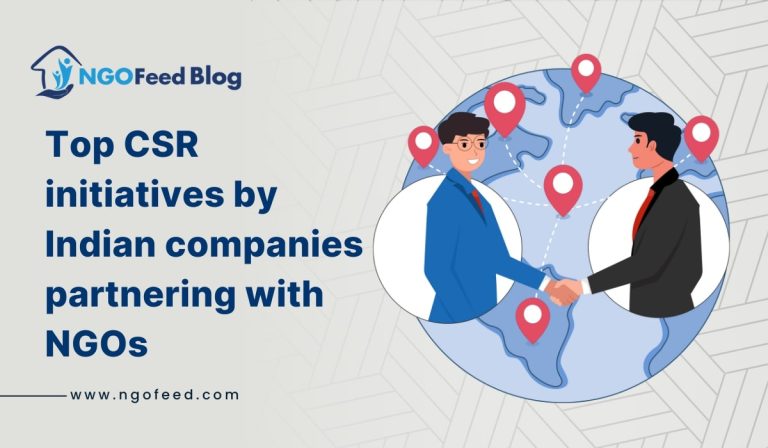How to Design a Crowdfunding Page for Nonprofits: Crowdfunding projects often compete with others online, and having a functional and good-looking crowdfunding page adds a big advantage. For a nonprofit, crowdfunding provides a place to tell your story, connect with people and grow a community. Still, building a well-designed crowdfunding page that inspires people’s emotions will give you a much better chance of raising money.
Nowadays, donors make decisions carefully. They don’t simply want to donate—they’re looking for causes that match their beliefs and see how their gifts are helping others. Your crowdfunding page is where you can bond with those who care. Your website should explain your mission clearly, share a memorable story and lead visitors easily through the donation form.
Also Read: Gamification in Volunteering
A good headline, clear photos, defined goals and honest handling of finances create trust and encourage supporters to act. Mobile accessibility, easy-to-use menus and tools for sharing help supporters get involved and spread updates to the people in their circles.
Table of Contents
How to Design a Crowdfunding Page for Nonprofits?
Your crowdfunding page’s layout matters a lot, whether you’re starting an emergency appeal, supporting a project in your area or funding your usual activities. In this post, we’ll teach you about the essential parts of a great crowdfunding page, so you can turn support into real contributions and boost your fundraising.
Crafting a Compelling Story That Inspires Giving
All successful nonprofit crowdfunding projects grow out of a powerful story. Often, people donate because they feel bonded to an issue, are touched, or trust that their donations will matter. As a result, the most successful crowdfunding pages start with a strong story.
Also Read: Donor Retention Strategies for NGOs
Make sure to open by stating your organization’s purpose and why what you are campaigning for is important. Skip using technical terms and emphasize results for people. Don’t say, “We give you the chance to support education.” Instead, say, “Because of your donation, 10-year-old Asha can continue her schooling.” Letting people know about the people your organization has helped makes your mission easy to understand and identify with.
A good story for crowdfunding should be organized. Be sure to start, develop and finish your screenplay. Point out the problem, outline the actions you’re taking to solve it and ask for help from your donors.
Remember how you use emotion when planning each step. Show the problems clearly, but also reassure readers. You can add real pictures or a video to your message to make it more compelling. Using visuals often makes us feel more empathy than when we read with no visuals.
Also Read: How to Write the Perfect Fundraising Email
Be sure to always ask readers to do what you want them to do. Be sure to explain to donors how their support will be put to use. When you tell people what their donation can do, it builds trust better than a general call to donate.
In short, your story links your mission to the hearts of your donors. Ensure your call-to-give feels important and truly encouraging, so that when people donate, they feel even better about it.
Design Elements That Drive Engagement and Trust
It’s not only important for design to be attractive; it must also be clear, simple to use and reliable. Design can play a major role in how much people are willing to donate on nonprofit crowdfunding sites. With an uncluttered design and focused graphics, your website can keep users involved, show you are experienced and boost their trust in your cause.
Also Read: Microdonations for Nonprofits
Begin your design with a clean and blank look. Draw attention to your headline, how much you’re trying to raise and the way people can donate. Don’t provide too much information right away when visitors land on your site. Move people informally through your website’s message and prompts with a neat visual structure.
Colour and font selection can make a big difference, though they may not seem obvious. Using the brand colours from your nonprofit helps keep your presence consistent and recognizable. Pick readable fonts and make the text easy to see by making the colours suitable against the background.
A lot depends on the quality of the pictures and movies you use. They help people connect with your goal and feel pity for what you are talking about. Feature actual images of people, not the same old stock images. A short clip (1-2 minutes) often helps us achieve higher engagement and donations because it includes examples and calls for support.
Offer progress bars and continue to update users to encourage them and show them what you’re doing. When you are just a bit from your goal, potential donors are more incentivized to give. Letters and words from those who have given help prove the organization’s worth.
It is also important that donating is easy and safe. Select a trusted service, add security logos to your form if you are allowed and reduce the number of actions needed to donate.
Also Read: Gen Z is the Next Wave of Donors
A well-designed site gets noticed—and wins people’s trust. When your crowdfunding page is eye-catching, stirs strong emotions and is user-friendly, it’s simpler for visitors to get involved.
Setting Goals, Transparency, and Clear CTAs
Reaching your goals in nonprofit crowdfunding relies on being clear, honest, and proactive with your calls-to-action. All these aspects help to spur donations and strengthen your bonds with your supporters.
Pick a set amount you’re trying to raise and put it in a visible place for everyone to notice. Instead of using a confusing phrase like “Help us raise funds,” make your target clear by using numbers and the good that will be achieved. By making goals clear, you show potential donors what they are supporting, and this encourages them to join in.
The main thing is to be honest with everyone. People who donate expect to understand how their funds are spent. Show your audience how much money will be used for which purposes. For example, the business needs ₹1,00,000 for equipment, ₹50,000 for training and ₹50,000 for transport. When you explain your budget, donors believe that their contributions will be used correctly.
Also Read: How to Manage your Nonprofits Budget?
Having progress bars and deadlines helps everyone know how much work is completed and how close they are to the finish. Frequently telling donors how you are doing and how their money is used shows you follow through with your promise.
The calls-to-action on your website matter just as much. A good CTA could be “Donate Now,” “Be a Hero Today,” or “Support a Child’s Education,” and these must be loud, easy to understand and bring about emotions. To make it easy for people to donate, your donate button should be featured after your story, next to photos and right at the top of your page.
Trust thrives on straightforward and trustworthy words. If potential donors understand your mission, can tell you’re honest and believe in your call to action, they’re much more willing to give.
Optimising for Mobile, SEO, and Social Sharing
To be successful now, a crowdfunding page needs to look good, be easy to discover, share and accessible on mobiles, tablets and computers. Making your page mobile, search engine friendly and shareable on social platforms increases how visible you are and how many people engage with you.
Also Read: Viral Nonprofit Campaigns for Optimal Impact
It is impossible to be successful without website optimization for mobile. You can expect that most users will view your page on smartphones or tablets. When your site takes a lot of time to display, is not easy to understand or includes a tricky way to donate, visitors will leave.
Responsive design should be used to guarantee your page is attractive and works well on any screen. Your donation button should be big and easy to press, and your form should only ask for the essentials.
SEO is about making your website ready for users looking on search engines. Be sure to add keywords in your content, starting with the headline, followed by the subheadings and using them in image alt text. Supplementing your page with terms like “back education without privilege” or “nonprofit fundraising for medical needs in India” can help it show up more often on search results. Ensuring your meta titles and descriptions are descriptive can improve your place in search results and the number of clicks you get.
If you want your post to go viral, social sharing is needed. Make sure share buttons for WhatsApp, Facebook, Instagram, LinkedIn and Twitter are part of your website. Encourage people helping your cause to encourage their friends by saying: “Please share our campaign with others and let’s reach out to more people.” It’s helpful to create some social media images or posts in advance for them to use. Wherever you can, mention what donors think or share encouragement found on social media to prove your legitimacy.
Also Read: Nonprofit Project Management
All in all, if you make your page mobile, easy to search online and ready for sharing, you can bring the right audience for your campaign at the perfect time. These technological features help make nonprofit online fundraising a success.
Tracking Performance and Improving Campaign Results
You need to check the results of your campaign to discover what works, what doesn’t and what can be changed for the next time. When you fail to monitor your data, you might overlook things that help your fundraising.
Make sure to set definite and measurable KPIs in your strategy. You can count these as total funds collected, the number of people donating, the average-sized donation, bounce rate, conversion rate and how many shares and comments came from participants. You can use Google Analytics, Facebook Insights or your crowdfunding platform’s dashboard to view data about these metrics instantly.
Also Read: Donor Retention Strategies for NGOs
Be sure to check how your donors are finding your cause. Is your website’s traffic coming through search engines, email campaigns or social media? Learning about these differences allows you to point your budget and energy towards the most effective channels.
Also, watch for the effects your stories and graphics have on your users. Does video content increase the chances of a landing page converting? Does a special type of marketing prompt donors to respond more? Tests in A/B form can optimize how you write your headlines and place your buttons.
Overlap what your audiences say with their actions to improve your communication strategy. Whenever your page gets a lot of visits but only a few people contribute, it’s a good idea to streamline donating or boost your argument for donations.
Make sure to make performance reports regularly and review them alongside your team. Watch for patterns, honour your achievements and change easily when something new arises.
If you make your crowdfunding efforts better by learning from data, you will reach more donors and achieve greater success for your cause.










